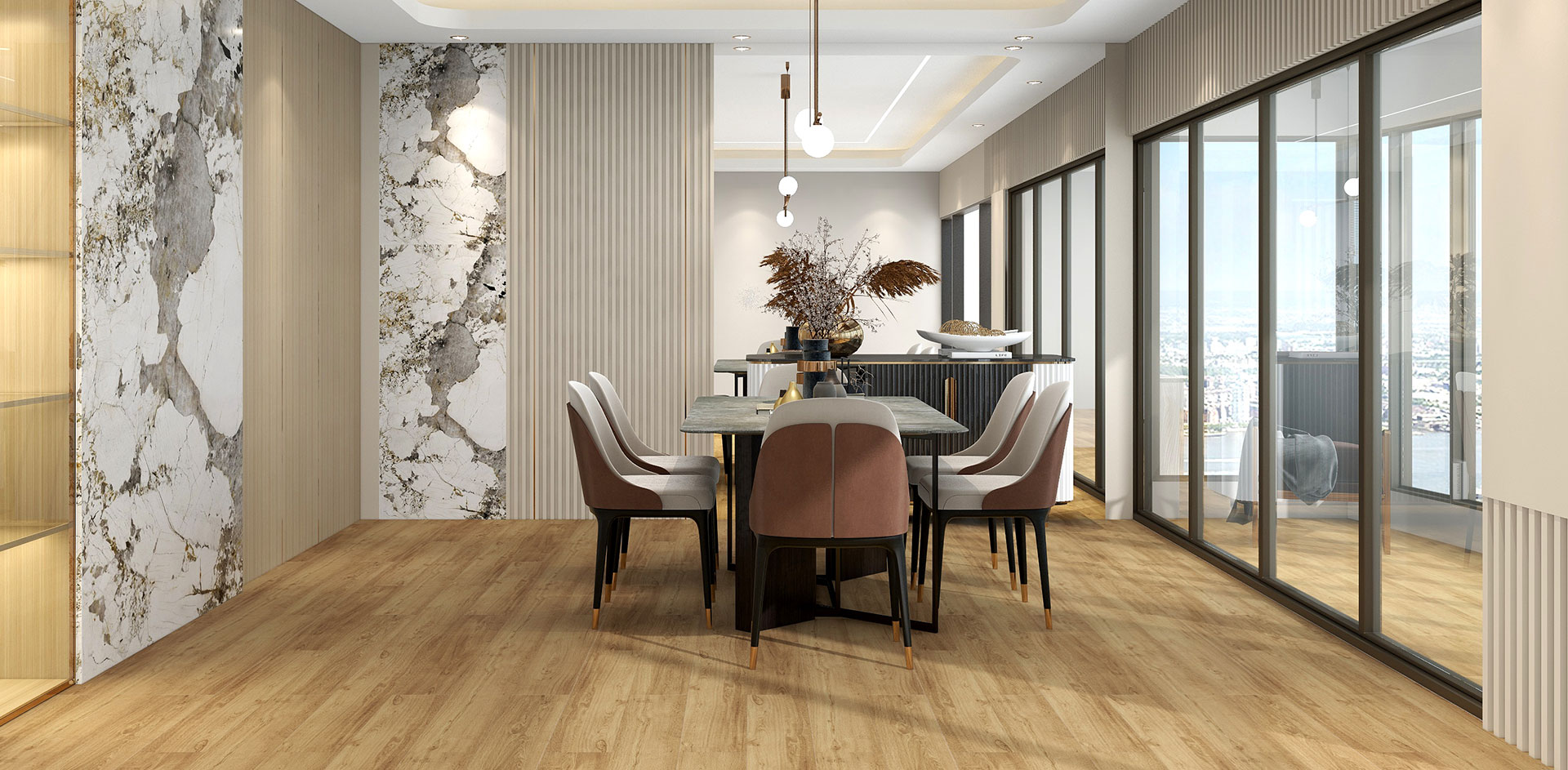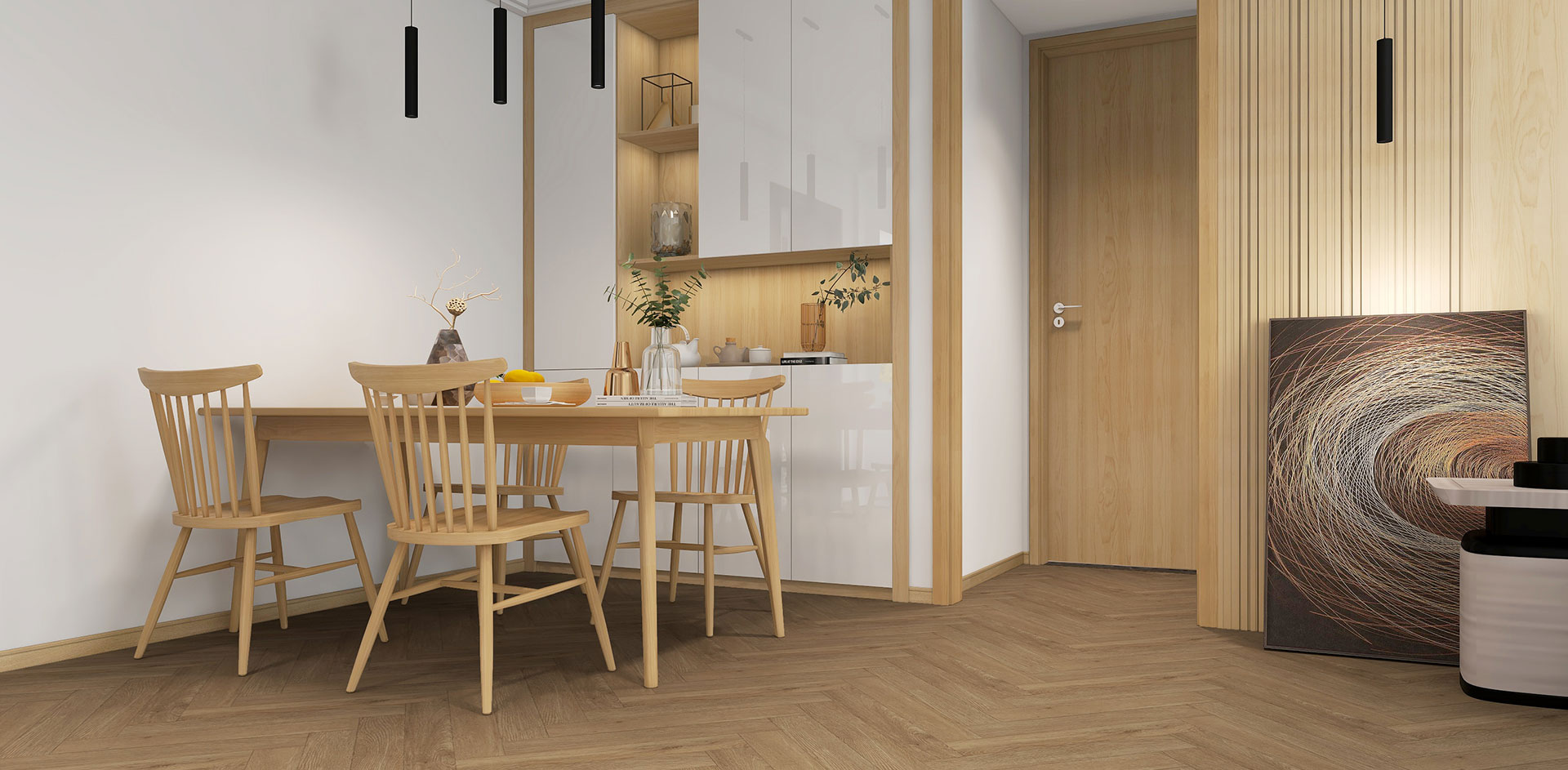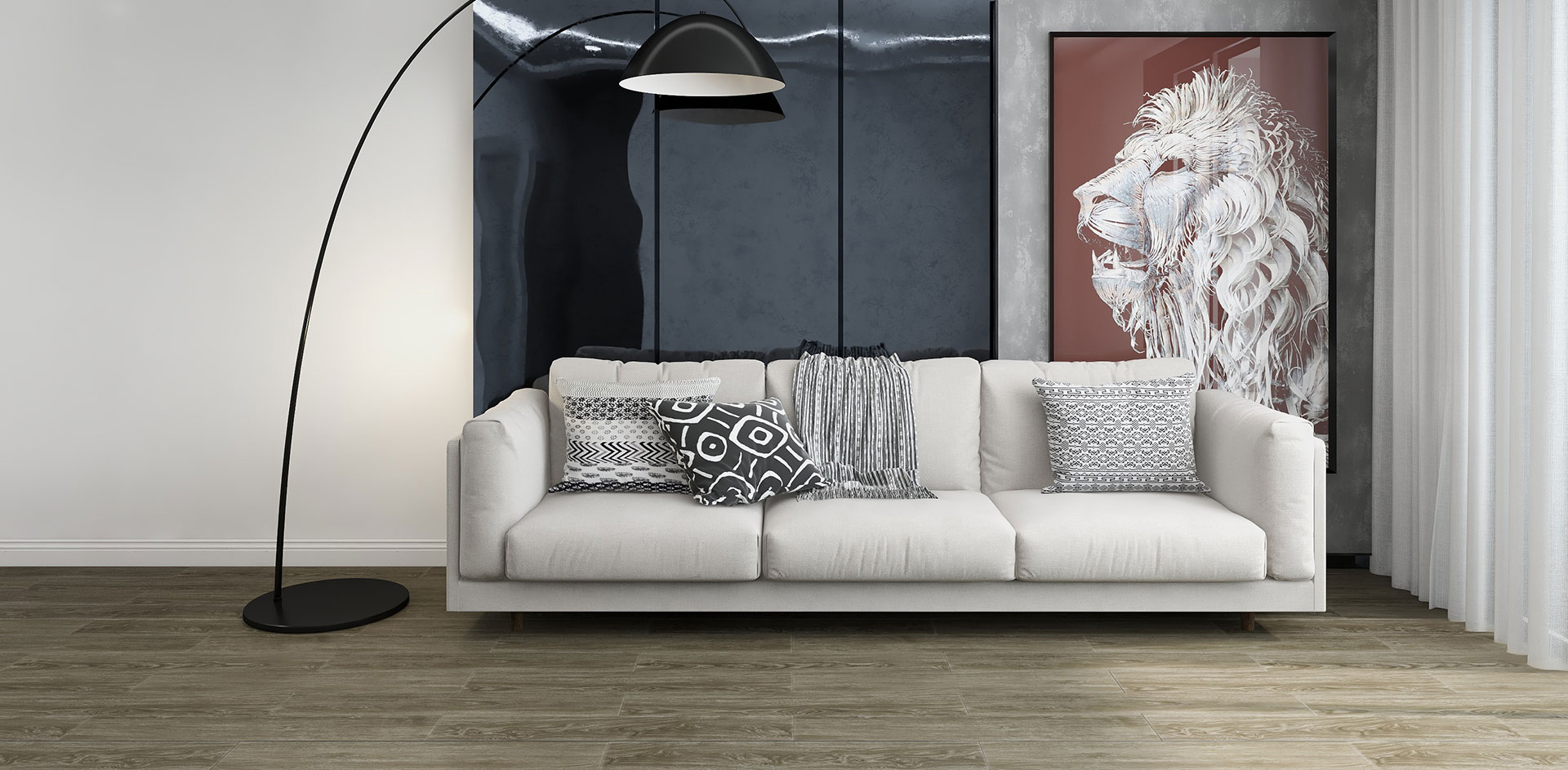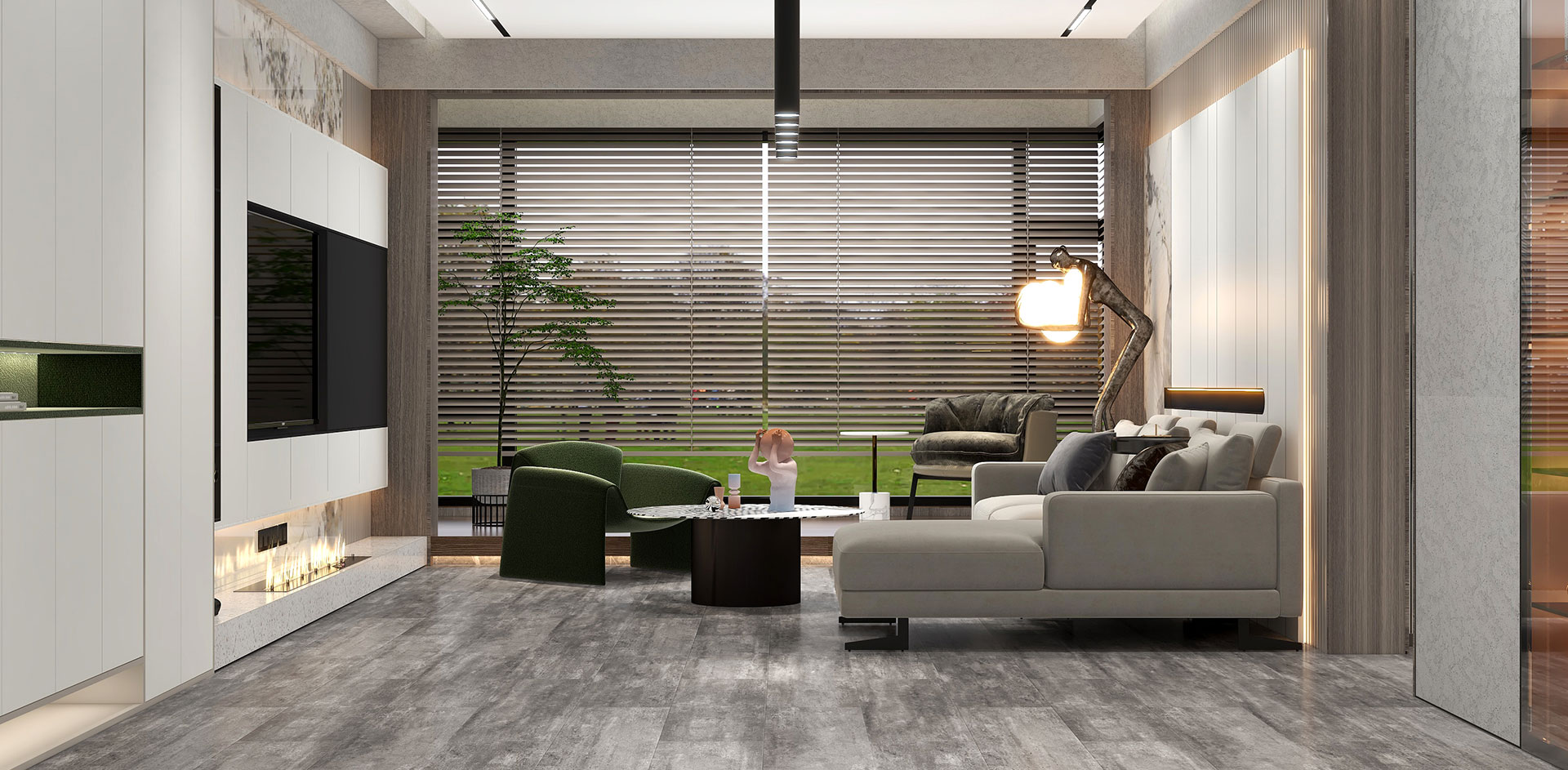Luxury Vinyl Plank (LVP):
LVP is a popular choice known for its realistic wood or stone look. It typically consists of multiple layers, including a wear layer, a photographic layer for design, a core layer, and sometimes an underlayment. LVP can mimic the appearance of hardwood, tile, or stone while offering exceptional durability and water resistance.
Rigid Core Vinyl Plank (RCVP):
Rigid core vinyl plank flooring is a type of LVP that has a solid, rigid core layer. This core layer enhances the stability and durability of the flooring, making it a suitable choice for high-traffic areas. RCVP often includes an attached underlayment for added comfort and noise reduction.
WPC (Wood-Plastic Composite) Vinyl Plank:
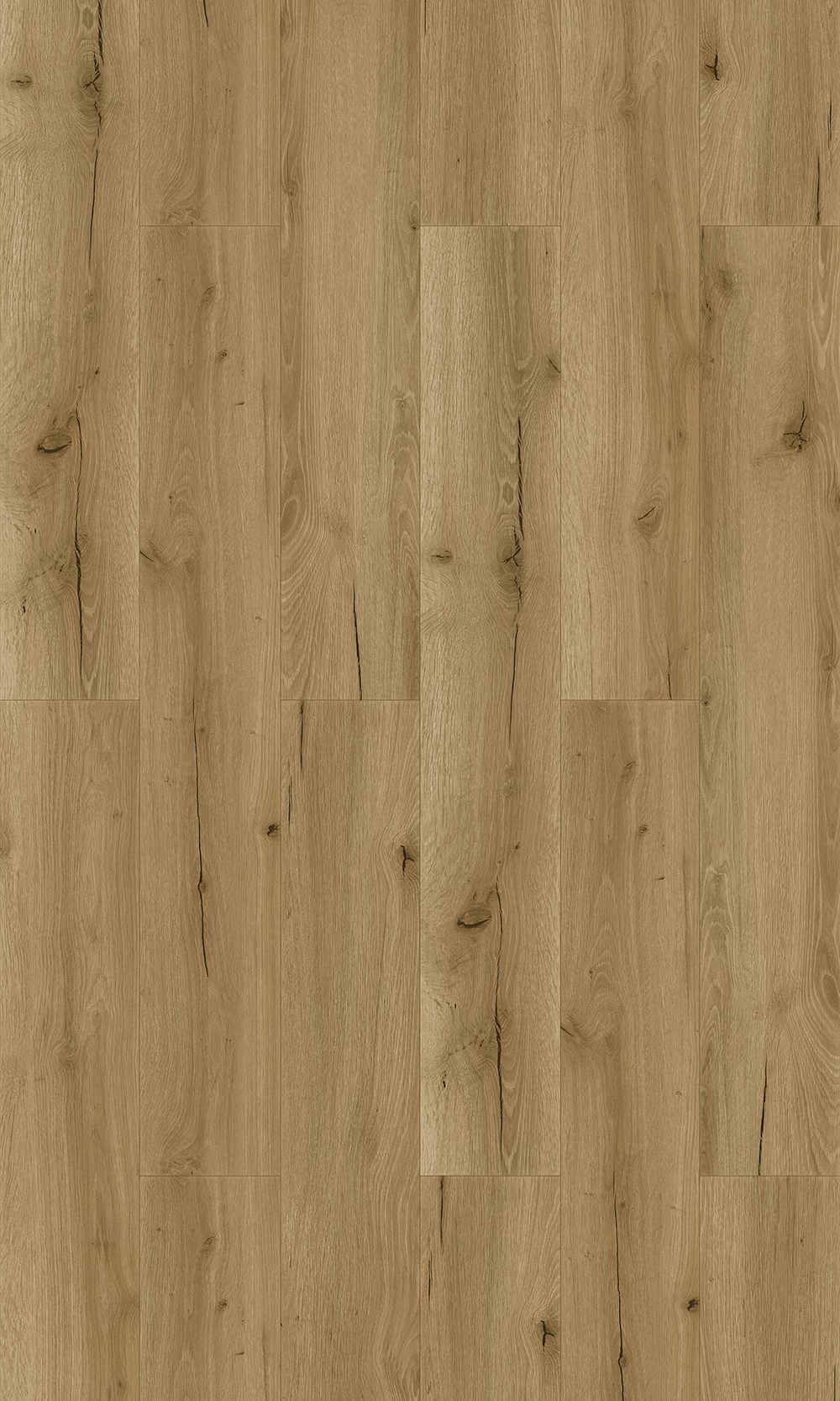
WPC vinyl plank flooring is engineered with a wood-plastic composite core, which combines wood and plastic materials. This core provides excellent dimensional stability and is less prone to expansion and contraction due to temperature and humidity changes. WPC is also highly waterproof and durable.
SPC (Stone-Plastic Composite) Vinyl Plank:
SPC vinyl plank flooring features a stone-plastic composite core, made of natural limestone powder, polyvinyl chloride (PVC), and stabilizers. SPC is exceptionally rigid and durable, making it a great choice for commercial settings and areas with heavy foot traffic. It's also highly resistant to water and moisture.
Glue-Down Vinyl Plank:
Glue-down vinyl plank flooring is installed by applying adhesive to the subfloor and then adhering the planks to it. This method ensures a secure and permanent installation. It's commonly used in commercial spaces due to its durability.
Peel-and-Stick Vinyl Plank:
Peel-and-stick vinyl plank flooring comes with an adhesive backing, making it easy to install without the need for additional adhesives or underlayment. It's a popular choice for DIY projects and small spaces.
Loose Lay Vinyl Plank:
Loose lay vinyl plank flooring is designed to lay flat on the subfloor without adhesive or locking mechanisms. It relies on its weight and friction to stay in place, making it a versatile and easy-to-install option.
Floating Vinyl Plank:
Floating vinyl plank flooring is installed as a "floating" floor, meaning the planks are not attached to the subfloor but interlock with each other. This type of installation is straightforward and often used in residential settings.
Sheet Vinyl with Wood Look:
While most vinyl plank flooring comes in individual planks, sheet vinyl with a wood look is available in large rolls. It can be an economical choice for covering larger areas quickly.
Each type of vinyl plank flooring has its unique features, advantages, and installation methods. Your choice should depend on your specific needs, budget, and preferences for style and durability. Consider factors such as the room's usage, moisture levels, and installation requirements when selecting the right type of vinyl plank flooring for your project.


 EN
EN  English
English Español
Español
